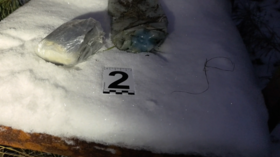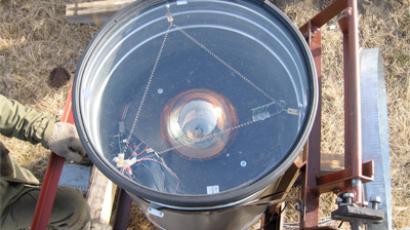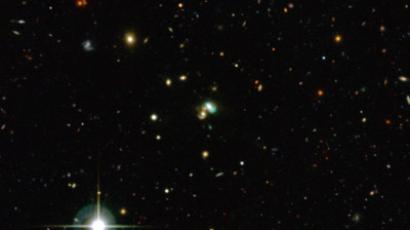Biggest in the universe: Scientists discover black holes weighing 40 billion suns

It turns out that the largest black holes may be even bigger than scientists previously thought. New research from NASA shows there are some real monsters out there, weighing the equivalent masses of 10 to 40 billion suns.
Scientists refer to them as ‘ultramassive’ black holes, not to confuse them with ‘supermassive’ holes, with only a few confirmed examples.These giants, all located in far-off galaxies about 1.3 billion light years from Earth, are more common than scientists originally thought.A survey, conducted by author Julie Hlavacek-Larrondo of Stanford University and her team, showed that at least ten out of 18 galaxies they studied had black holes that may weigh up to 40 billion times the mass of the sun."Ultramassive black holes – that is, black holes with masses exceeding 10 billion solar masses – are probably not rare; several and even dozens of these colossal black holes may exist," said Julie Hlavacek-Larrondo, the study's lead author.The largest supermassive black hole in the heart of Milky Way, the galaxy that contains our Solar System, is estimated to weigh about 6.4 billion solar masses.Astronomers have discovered giant black holes after using NASA's Chandra X-ray Observatory, along with radio data from the NSF's Karl G. Jansky Very Large Array, a major observatory station. Further monitoring stations, such as the Australia Telescope Compact Array and infrared data from the 2 Micron All-Sky Survey have also aided the discovery of black holes. To estimate the size of these ultramassive holes, Hlavacek-Larrondo and her colleagues analyzed the X-rays and radio waves generated by black holes when they destroy the gas, dust, and stars near them. The black holes they found turned out to be roughly 10 times larger than expected, given the size of their respective host galaxies.“These results may mean we don’t really understand how the very biggest black holes coexist with their host galaxies,” said co-author Andrew Fabian in press-release. “It looks like the behavior of these huge black holes has to differ from that of their less massive cousins in an important way.”More research and modelling will be needed to confirm the team's results.Now Hlavacek-Larrondo plans to measure the mass of these extreme black holes. She believes that the black hole’s mass could be even higher.“I wouldn't be surprised if I end up finding a 100 billion solar mass black hole!” the scientists wrote.














